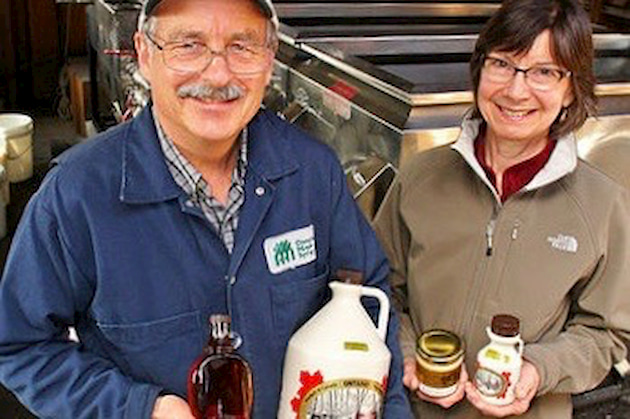Sap & Syrup
Canadian researchers study the buddy
OMSPA sponsors buddy syrup research
By | DECEMBER 4, 2019
LONDON, Ont.—The Ontario Maple Syrup Producers Association is sponsoring a study on eliminating buddy syrup.
“There is a reason why this essential work has never been done before,” explains Bob Gray of OMSPA. “It is very difficult to do, requires state-of-the-art equipment and some very smart chemists to tease out the answers.”
Gray is owner and operator of Kemble Mountain Maple Products, a small family maple business in southern Ontario. He has served as Research Committee Chair for the OMSPA for nearly a decade.
Gray rallied interest among the OMSPA’s 500+ small maple business owners to support the three-part buddy study, all under the guidance of Dr. David Miller, a world-renowned chemist at Carleton University.
“The intent of this study was to see if it was possible to identify a chemical precursor to maple sap becoming buddy,” says Dr. Miller.
It’s all about microclimate.
“Trees on a south-facing slope will ‘bud out’ sooner than those on a north-facing slope, and many sugar bushes have both. So, the research was focused on the transition to ‘buddy’ and the identification of its precursors.”
For the new study sap samples were collected throughout last year’s maple season from two different maple bushes in Ontario. They were then forwarded to Dr. Justin Renaud at Agriculture and Agri-Food Canada in London, Ontario, for chemical analysis using mass spectrometry.
The results suggested that a chemical precursor could be identified with more research.
Bring in Eloy Jose Torres Garcia, a senior at Fanshawe College in London, Ont. who led a project to study the problem.
“Buddy wastes time, fuel, and money,” says Garcia, a Colombian microbiologist and biotech undergrad.
Garcia’s was funded by a $7,500 internship program by Mitacs, a not-for-profit organization funded by federal and provincial governments, that supports growth and innovation in Canadian business. Another $7,500 was provided by OMSPA who partnered with Fanshawe College and Agriculture Ontario.
Before a buddy test can be created, the research team had to isolate the problem.
“The problem with buddy is that no one knows what makes it happen. It’s just a flavour, and there’s heated discussion about where it comes from,” Garcia said.
First, they had to pinpoint whether the buddy phenomenon stemmed from the tree or the production process.
The evidence suggests that an excess of nitrogen compound produced in the tree during late spring could be the culprit.
Next up was the identification of the specific compound.
Gray coordinated the collection of sap and syrup samples throughout the entire maple season, from 11 regions across Ontario, as far north as Sault Ste. Marie.
“Geographic location can have a huge impact on flavour,” Gray said. “Flavours depend on a lot of factors like soil type, your trees, and the methods of syrup production utilized. But of course, everyone’s maple syrup is the best,” he jokes.
“The sap can look good and smell good, until it’s boiled and thickens into syrup,” he explains. “Then it tastes like a burned Tootsie Roll and it keeps getting worse the later you go into the season. You can’t mask the taste by mixing it with better quality syrup.”
The industry’s strategies to nip buddy in the bud vary.
Gray’s own tradition was passed down from his long-time mentor many years ago, and relies on the local frog population.
“When it gets warm enough for spring peepers…” he said. “The third night you hear them calling, that’s when you stop collecting and processing sap, or you get buddy.”
There’s probably some science to that, he adds, “but not everyone has frogs."
The research team tested the molecules in the trees before the spring tap and then again at harvest in March.
They were able to flag the nitrogen compounds and precisely measure sugars, determining that buddy starts in the tree.
“Everything has a smell or flavour created by a chemical compound, molecules that we can smell and taste,” Garcia said. “Of those hundreds of compounds, just one can give you a good or bad taste.”
Climate change requires that the industry incorporate more scientific processes to address buddy syrup.
“It’s becoming increasingly difficult to determine when we can expect the end of the season to occur, based on traditional past experience and calendar dates,” Gray said.
The final stage of the study will focus on developing a paper-based test, similar to a pregnancy test, to identify the buddy sap precursor outside of the lab.
































